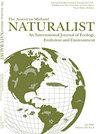Species Richness, Abundance, and Productivity of Birds Along a Powerline Right-of-way within a Forested Landscape, Northeastern United States
IF 0.6
4区 环境科学与生态学
Q4 Agricultural and Biological Sciences
引用次数: 0
Abstract
Abstract. Utility rights-of-way (ROW) serve as nesting areas and maintain a high diversity of early successional birds. ROW incorporating wire zone–border zone and integrated vegetation management can be used as examples of early successional habitat management for bird conservation more generally in the Northeastern United States, given artificial disturbances not created solely for natural resource conservation comprise approximately 80% of early successional habitats. The objective of our study was to determine the effect of herbicide and mechanical vegetation management approaches on the abundance, species richness, and reproductive success of breeding bird species occupying an electric transmission line ROW in central Pennsylvania. The overall abundance of birds was significantly lower within the wire and border management zones, following initiation of a new vegetation management cycle at State Game Lands (SGL 33) than in the years prior to management. Sections of ROW with no border zones contained the lowest abundance and species richness of breeding birds compared to sections with borders prior to the initiation of a new management cycle. Sections of ROW with no border zones and mowing sections had the lowest bird abundance and species richness of all ROW sections at the onset of a new management cycle, and contained the lowest number of bird species displaying evidence of breeding, both prior to and at the beginning of management cycles. Sections of ROW managed using herbicides were comparable or more beneficial to bird communities in terms of abundance, species richness, indices of productivity, and nesting success than sections maintained via mechanical treatments (mowing and hand cutting), both at the end and beginning of management cycles within a forested landscape in the central Appalachian Mountains and surrounding forested regions in the northeastern United States.美国东北部森林景观中电力线沿线鸟类的物种丰富度、丰度和生产力
摘要公用事业通行权(ROW)作为筑巢区,保持了早期演代鸟类的高度多样性。结合线带-边界带和综合植被管理的ROW可以作为美国东北部鸟类保护早期演替栖息地管理的例子,因为不仅仅是为了自然资源保护而制造的人工干扰约占早期演替栖息地的80%。本研究的目的是确定除草剂和机械植被管理方法对占据宾夕法尼亚州中部输电线路ROW的繁殖鸟类的丰度、物种丰富度和繁殖成功率的影响。在国家禁猎区(SGL 33)启动新的植被管理周期后,在线和边界管理区内的鸟类总体丰度明显低于管理前几年。在开始新的管理周期之前,没有边界带的ROW区域与有边界的区域相比,繁殖鸟类的丰度和物种丰富度最低。在新的管理周期开始时,无边界带和刈割区的鸟类丰度和物种丰富度在所有ROW区域中最低,并且在管理周期之前和开始时显示繁殖证据的鸟类数量最少。在美国东北部阿巴拉契亚山脉中部的森林景观和周围的森林地区,在管理周期的结束和开始阶段,使用除草剂管理的ROW区域在鸟类群落的丰度、物种丰富度、生产力指数和筑巢成功率方面与通过机械处理(割草和手工切割)维持的区域相当或更有利。
本文章由计算机程序翻译,如有差异,请以英文原文为准。
求助全文
约1分钟内获得全文
求助全文
来源期刊

American Midland Naturalist
环境科学-生态学
CiteScore
1.20
自引率
0.00%
发文量
38
审稿时长
18-36 weeks
期刊介绍:
The American Midland Naturalist has been published for 90 years by the University of Notre Dame. The connotations of Midland and Naturalist have broadened and its geographic coverage now includes North America with occasional articles from other continents. The old image of naturalist has changed and the journal publishes what Charles Elton aptly termed "scientific natural history" including field and experimental biology. Its significance and breadth of coverage are evident in that the American Midland Naturalist is among the most frequently cited journals in publications on ecology, mammalogy, herpetology, ornithology, ichthyology, parasitology, aquatic and invertebrate biology and other biological disciplines.
 求助内容:
求助内容: 应助结果提醒方式:
应助结果提醒方式:


